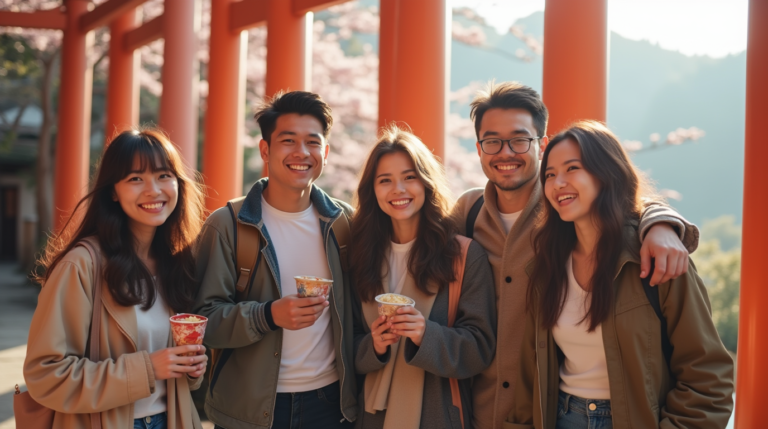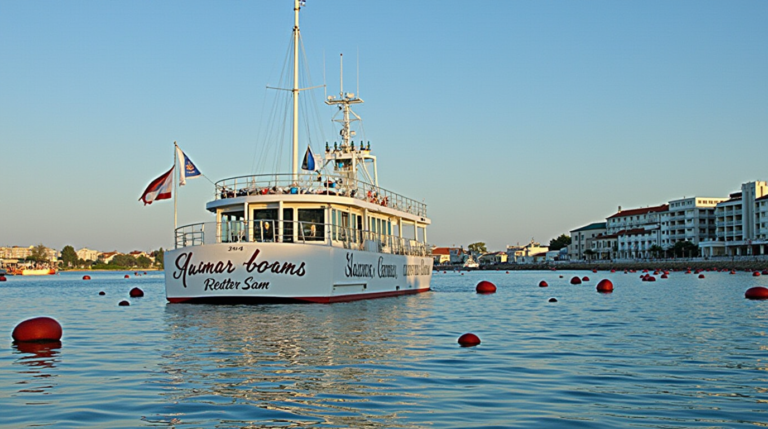Traveling to Japan for the First Time: The Ultimate Guide
Japan blends ancient traditions with cutting-edge modernity, making it a fascinating destination for travelers. If you’re planning your first trip to the Land of the Rising Sun, this comprehensive guide will help you navigate Japanese culture, practical considerations, and must-see attractions.
Table of Contents
Understanding Japanese Culture and Etiquette
One of the most rewarding aspects of visiting Japan is experiencing its unique culture. A basic understanding of Japanese etiquette will enhance your trip and show respect for local customs.
When greeting locals, a simple bow is customary, though as a tourist, a slight nod of acknowledgment is usually sufficient. Japanese people are generally understanding of foreigners unfamiliar with their customs.
In Japanese homes, you’ll notice the genkan—an entryway where shoes are removed before stepping into the living space. Watch for slippers provided for guests, but remember to remove these before stepping onto tatami mat floors.
Dining etiquette deserves special attention. In traditional restaurants, you might sit on floor cushions at low tables. Use the provided oshibori (wet towel) to clean your hands before eating. When using chopsticks, never stick them vertically into rice (this resembles funeral rituals) or pass food directly from your chopsticks to another person’s. Hold your bowl close to your face rather than leaning down to it, and slurping noodles is actually considered appreciative!
At temples and shrines, observe purification rituals at water pavilions by rinsing your hands and mouth. When praying, bow twice, clap twice, then bow once more. Photography restrictions vary by location, so always check for signs.
Navigating the Language Barrier
Don’t let language concerns deter you from visiting. While learning a few basic phrases will enhance your experience, many Japanese people in tourist areas understand basic English. Train stations, major attractions, and restaurants in popular areas often have English signage.
Useful phrases include “Konnichiwa” (hello), “Arigatou gozaimasu” (thank you), “Sumimasen” (excuse me/sorry), and “Eigo wo hanasemasu ka?” (Do you speak English?). Translation apps like Google Translate and Japan-specific travel apps can also bridge communication gaps.
Japan’s culture of “omotenashi” (wholehearted hospitality) means locals often go out of their way to help visitors, even when language barriers exist.
Money Matters: Currency and Budgeting
Japan uses the yen (¥/JPY), and despite its technological advancement, remains largely cash-based. Credit cards are increasingly accepted in cities and tourist areas, but smaller establishments and rural locations often require cash.
Avoid exchanging money at airports where rates are unfavorable. Instead, use ATMs at 7-Eleven stores, post offices, or international-friendly banks. A typical week-long trip might cost $1,500-2,500 per person, covering mid-range accommodations, transportation, meals, and attractions.
For U.S. citizens, stays under 90 days don’t require a visa, but you’ll need a passport valid for the duration of your stay. While Japan doesn’t mandate specific vaccinations, travel insurance is highly recommended.
Timing Your Visit
Each season offers unique experiences in Japan. Spring (March-May) brings the famous cherry blossoms, with peak viewing typically in late March to early April. Summer (June-August) features vibrant festivals but can be hot and humid. Fall (September-November) offers comfortable temperatures and stunning autumn foliage. Winter (December-February) brings snow to northern regions, perfect for winter sports enthusiasts.
If possible, avoid Golden Week (late April to early May) and New Year holidays when domestic tourism peaks, resulting in crowded attractions and higher prices.
Exploring Japan’s Regions
Japan consists of four main islands, each with distinct characteristics. Most first-time visitors focus on Honshu, the largest island, home to Tokyo, Kyoto, Osaka, and Hiroshima.
Tokyo dazzles with its blend of ultra-modern districts like Shibuya and Shinjuku alongside traditional areas like Asakusa. Kyoto preserves Japan’s cultural heritage with over 1,600 Buddhist temples and 400 Shinto shrines. Osaka offers incredible food and a more laid-back atmosphere, while Hiroshima provides powerful historical perspective.
Consider venturing beyond Honshu to Hokkaido for natural beauty, Kyushu for hot springs, or Okinawa for tropical beaches if time permits.
Transportation Tips
Japan’s transportation system is famously efficient and extensive. For long-distance travel, the shinkansen (bullet train) connects major cities at speeds up to 200 mph. The Japan Rail Pass, available only to foreign visitors, offers unlimited travel on JR trains for 7, 14, or 21 days and can provide significant savings.
Within cities, subway and bus networks are comprehensive. Purchase IC cards like Suica or PASMO for convenient tap-and-go travel on public transportation.
Accommodation Options
Japan offers diverse lodging options. Traditional ryokan inns provide tatami rooms, futon bedding, and often include kaiseki multi-course meals. Business hotels offer practical, compact rooms at reasonable rates. For budget travelers, capsule hotels provide unique, minimalist sleeping pods.
In Tokyo, consider staying in Shinjuku or Shibuya for nightlife and shopping, or Asakusa for a more traditional atmosphere. In Kyoto, the downtown area offers convenience, while areas near Gion provide traditional charm.
Culinary Adventures
Japanese cuisine extends far beyond sushi. Try ramen (noodle soup), tempura (battered and fried seafood or vegetables), okonomiyaki (savory pancakes), and takoyaki (octopus balls). Don’t miss kaiseki ryori, Japan’s sophisticated multi-course dining experience.
For budget meals, convenience stores like 7-Eleven, FamilyMart, and Lawson offer surprisingly good, affordable food. Department store basement food halls (depachika) showcase incredible variety and quality.
Final Tips
Pack light—Japan’s excellent laundry facilities make it easy to wash clothes. Bring comfortable walking shoes as you’ll explore extensively on foot. Public Wi-Fi isn’t as widespread as in some countries, so consider renting a pocket Wi-Fi device or SIM card.
Most importantly, embrace the Japanese concept of “wabi-sabi”—finding beauty in imperfection and transience. Allow yourself to get slightly lost, interact with locals, and appreciate unexpected moments. These often become the most treasured memories of traveling in this extraordinary country.
The official website of the Immigration Services Agency of Japan, which would be found by searching for “Immigration Services Agency of Japan” or “出入国在留管理庁” (Shutsunyukoku Zairyu Kanricho) in your preferred search engine.
For visa applications specifically, you should visit the website of the Japanese embassy or consulate in your country, as visa applications are typically processed through diplomatic missions rather than directly through immigration.
For tourists, the Japan National Tourism Organization (JNTO) also provides helpful information about entry requirements that you can find by searching for “JNTO visit Japan requirements.”








One Comment